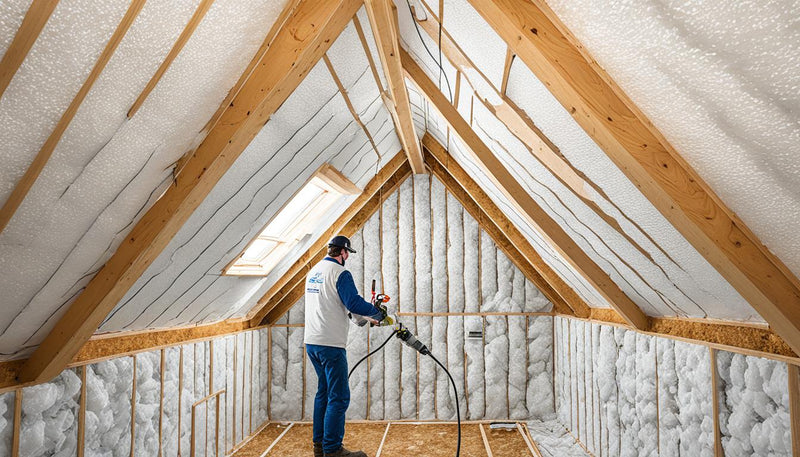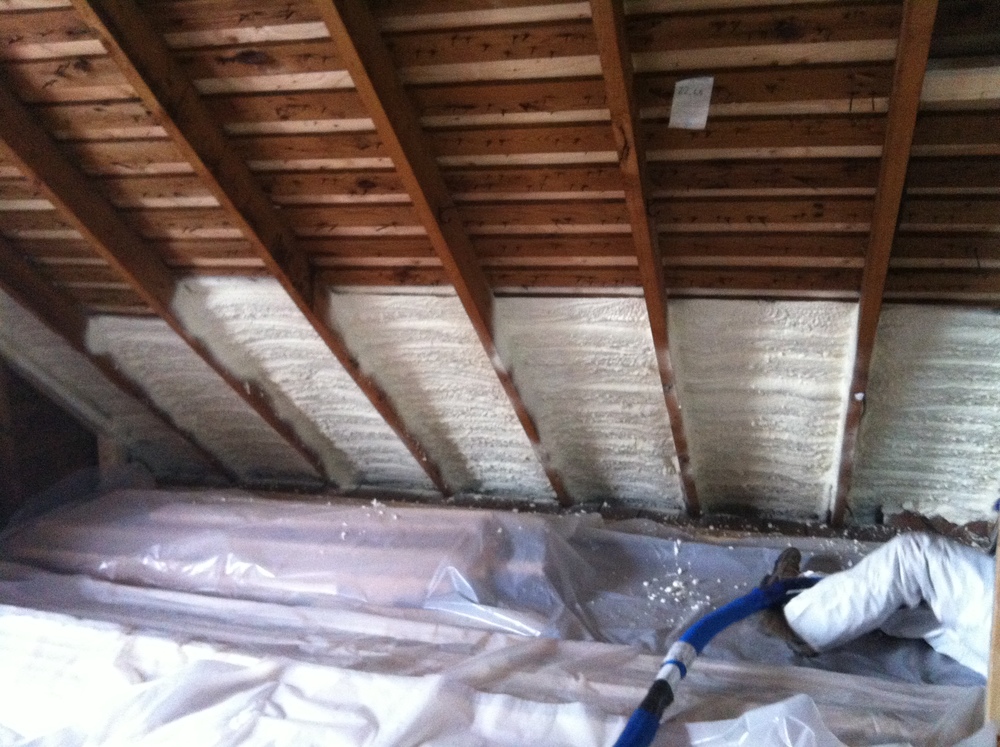Frequently Asked Questions Regarding Spray Foam Installation and Use
Frequently Asked Questions Regarding Spray Foam Installation and Use
Blog Article
Spray Foam: The Ultimate Option for Air Sealing and Insulation
Spray foam insulation has emerged as a leading solution for reliable air sealing and thermal insulation, offering a distinct mix of homes that set it besides standard approaches. Its capacity to increase and load voids makes it specifically reliable in preventing air leak, which can substantially affect energy effectiveness. Nevertheless, recognizing the full range of its benefits, installment processes, and contrasts with various other insulation types is essential for making notified choices. As we explore these elements, the ramifications for both new buildings and retrofits become progressively considerable. What aspects should affect your selection?
What Is Spray Foam?
Spray foam is a functional insulation product that integrates the concepts of air securing and thermal resistance to enhance power performance in buildings. Composed largely of polyurethane or other similar substances, spray foam is applied as a liquid that expands upon call with surfaces, creating a strong, continuous layer of insulation. This one-of-a-kind property permits it to fill up voids, fractures, and voids that conventional insulation materials might ignore, providing a premium air seal.
There are 2 main kinds of spray foam: open-cell and closed-cell. Open-cell spray foam is lighter and more adaptable, providing superb noise absorption and a reduced R-value per inch - Spray Foam. In contrast, closed-cell spray foam is denser, giving a higher R-value, dampness resistance, and added architectural integrity to constructing components
The application procedure generally entails specialized tools, ensuring a smooth application that abides by various substratums, consisting of metal, timber, and concrete. This flexibility makes spray foam suitable for both new building and constructions and retrofitting existing structures. Its capability to develop an airtight obstacle significantly adds to lowering power consumption and enhancing interior air quality, thus making it a recommended selection among house owners and building contractors alike.
Advantages of Spray Foam Insulation
One of the most considerable benefits of spray foam insulation is its remarkable capability to produce a constant air obstacle, which successfully decreases power loss. Unlike conventional insulation materials, spray foam broadens to fill up spaces and fractures, making sure that air leak is substantially reduced. This characteristic not only enhances energy effectiveness however likewise results in reduce energy expenses gradually.
Furthermore, spray foam insulation supplies remarkable thermal resistance, adding to an extra secure interior setting. Its high R-value per inch permits reliable insulation in constrained rooms, making it suitable for attic rooms, walls, and crawl spaces. Moreover, the moisture-resistant residential or commercial properties of spray foam help prevent mold and mildew and mold development, promoting healthier living problems.
Another critical advantage of spray foam insulation is its sound-dampening high qualities (Spray Foam). It effectively lowers noise transmission in between spaces, creating a quieter and a lot more comfortable home setting. The toughness of spray foam also stands out, as it does not droop or work out with time, preserving its efficiency throughout its life expectancy
Just How Spray Foam Works
Recognizing how spray foam insulation functions is important for valuing its effectiveness in air securing and thermal resistance. Spray foam insulation consists of two key components: isocyanate and polyol material. When these components are blended, they undertake a chemical reaction that creates the material to broaden swiftly, creating a dense foam that loads gaps, tooth cavities, and splits.
As the foam increases, it complies with surfaces, developing an impermeable seal that considerably minimizes air seepage. This characteristic makes spray foam insulation highly efficient at protecting against drafts and moisture penetration, which can cause power loss and damage in time. Furthermore, the closed-cell version of spray foam offers exceptional thermal resistance because of its inflexible framework, properly decreasing heat transfer.
The distinct properties of spray foam allow it to adapt to uneven surface areas, making sure detailed insurance coverage and a smooth obstacle. Because of this, spray foam insulation not just boosts power performance yet additionally adds to enhanced interior air high quality by minimizing the build-up of pollutants and allergens. Inevitably, recognizing the technicians behind spray foam emphasizes its duty as a premium selection for insulation and air securing in both commercial and click reference residential applications.
Setup Refine Summary

Before installation, the area has to be sufficiently cleaned up and prepped, making certain that surface areas are devoid of wetness, debris, and dirt. Since impurities can endanger attachment and overall performance, this step is important. When the location is prepared, the application entails blending the two components of the spray foam, which expands upon get in touch with and fills up spaces properly.
Educated specialists need to conduct the installation, utilizing specialized equipment to guarantee uniform coverage and optimal density. Safety precautions, including wearing protective gear and guaranteeing proper ventilation, are vital during this process. After application, the foam generally cures quickly, forming a strong obstacle that boosts energy effectiveness.
Comparing Spray Foam to Traditional Insulation
When evaluating insulation alternatives, spray foam insulation stands out in comparison to traditional products such as fiberglass and cellulose. Unlike fiberglass and cellulose, which can allow air infiltration, spray foam expands upon application, filling up gaps and crevices to create an airtight seal.
In addition, spray foam provides a higher R-value per inch than conventional insulation types, offering more effective thermal resistance in a thinner profile. This particular is especially valuable in rooms with restricted cavity deepness. Moreover, spray foam is immune to moisture and mold and mildew growth, which can be a considerable concern with cellulose and fiberglass, especially in moist environments.
Nonetheless, spray foam insulation generally brings a greater upfront expense than its standard equivalents. Property owners need to consider this initial investment versus lasting energy savings and performance advantages. Inevitably, while both insulation types serve their function, spray foam arises as an advanced service for contemporary insulation demands, particularly in regards to air sealing and thermal effectiveness.

Conclusion
In recap, spray foam insulation stands for a very reliable service for attaining optimum air securing and thermal resistance. Its unique buildings, including moisture resistance and noise dampening, make it ideal for numerous applications in both new buildings and retrofitting jobs (Spray Foam). The first prices might be go to website higher compared to typical insulation products, the long-lasting benefits, such as substantial power savings and boosted indoor air quality, validate the investment and emphasize its value in modern-day building practices.
Spray foam insulation has actually emerged as a leading remedy for efficient air sealing and thermal insulation, official source using a distinct mix of properties that establish it apart from conventional approaches.Spray foam is a flexible insulation product that integrates the concepts of air sealing and thermal resistance to boost energy performance in buildings.When reviewing insulation choices, spray foam insulation stands out in contrast to conventional products such as fiberglass and cellulose. Ultimately, while both insulation kinds offer their function, spray foam arises as a more sophisticated remedy for contemporary insulation demands, particularly in terms of air sealing and thermal performance.
In summary, spray foam insulation represents a very effective service for attaining optimal air sealing and thermal resistance.
Report this page